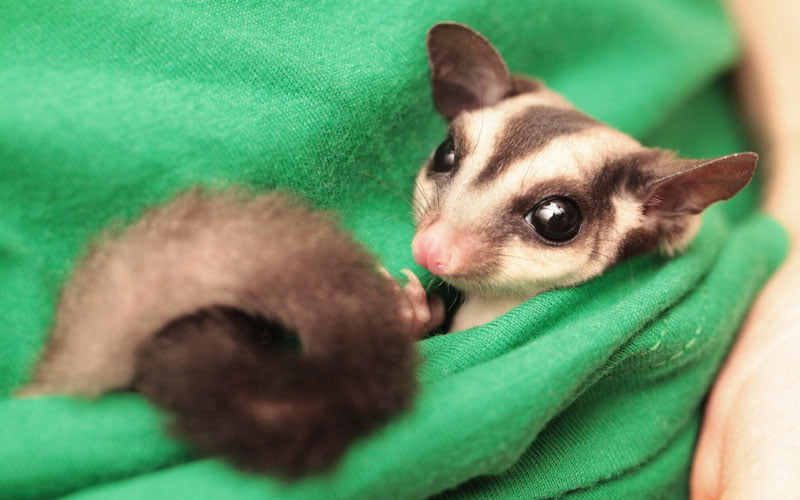For avid animal lovers and those with a penchant for exotic pets, the sugar glider stands as a delightful choice. Native to the forests of Australia, Indonesia, and New Guinea, these mammals are popular for their cute appearance. Specifically, the white sugar glider, marked by its unique color morphology, is a variant that pet enthusiasts may not be as familiar with.
This guide aims to shed light on the specific care needs and surprising nuances guide
Owning a white sugar glider as a pet
1. They Need Proper Diet and Nutrition
An essential aspect of keeping a white sugar glider is ensuring a proper diet. These omnivorous creatures eat a varied diet in the wild. They eat insects, nectar, fruit, and the sweet sap of eucalyptus trees.
For white sugar gliders in captivity, replicating this diverse menu is crucial for their health. Supplements such as calcium and vitamins, especially if a varied diet is not entirely feasible, can be advantageous.
Some keepers opt for commercial pelleted diets. These are formulated to meet the nutritional needs of sugar gliders and are convenient for owners.
2. They Have Specific Housing and Environment Needs
The right environment is critical for the well-being of white sugar gliders. Adequate housing should not only offer security but also space for exercise and social interaction.
A large, multi-level cage with horizontal bars is ideal for sugar gliders to climb and glide. Wire cages are favoured for their good ventilation, provided the spacing between bars is narrow enough to prevent escapes. Sufficient toys and accessories, like ropes and wheels, should also be part of the enclosure to stimulate these energetic pets.
Maintaining a stable environment is also crucial. White sugar gliders are sensitive to temperature changes. The ideal range is between 70-90°F, with a relative humidity of 30-50%.
3. They Need Socialization
One of the lesser-known traits of white sugar gliders is that they are social animals and should not be housed alone. In the wild, they live in colonies. A similar companionship requirement is necessary in captivity.
Owners are encouraged to spend time with their pets daily to foster a strong bond. Carrying a glider in a bonding pouch close to your body can simulate the comfort they get from being close to their colony members.
4. They Require Veterinary Care
Just like any other pet, white sugar gliders require regular healthcare maintenance. Unfortunately, being exotic animals with unique features, they may face specific health concerns.
Sugar gliders can suffer from ailments unique to their species. This includes calcium deficiencies leading to hind leg paralysis known as ‘HLP.’ Regular veterinary visits can detect early signs of such conditions.
In general, exotic pets for hobbyists require a specially qualified veterinarian. So be sure to do your research and find a reputable vet with experience in sugar gliders.
5. They Are a Long-Term Commitment
Longevity is one of the most surprising details about sugar gliders. It underscores the need for an owner’s sustained interest. They need to be available and provide resources for a long-lasting relationship.
Get a White Sugar Glider Today
White sugar gliders are captivating and sociable pets that bring much joy to their owner. However, they require a dedicated care regimen, ample social interaction, and specialized veterinary care.
If you are up to the challenge, consider adding a white sugar glider to your family today! So why not take the leap? Just keep in mind that owning an exotic pet is a long-term commitment that requires proper research and preparation.
Did you find this article helpful? If so, check out the rest of our site for more.
















